Note: This website was automatically translated, so some terms or nuances may not be completely accurate.
Combating Global Warming with "Blue Carbon": The Potential of the Artificial Reef "Reef Ball" (Part 2)

Osamu Ikeda
Asahi Tech Co., Ltd.

Koji Fuji
Dentsu Inc.
As global warming accelerates, "blue carbon" is gaining attention as a decarbonization initiative. Among these, the artificial reef "Reef Ball," developed in the United States, is expected to have a significant impact on preserving marine ecosystems.
This time, we held a discussion between Mr. Osamu Ikeda, President of Asahi Tech Co ., Ltd., which is promoting Reef Ball adoption in Japan, and Mr. Takashi Fuji of Dentsu Inc., who works in the carbon neutrality and blue carbon fields. In Part 2, we hear about improvements to Reef Ball and Asahi Tech's future outlook. We also bring you a report from Asahi Tech's headquarters factory.
Preventing "Ocean Desertification" Through Reef Ball Improvements
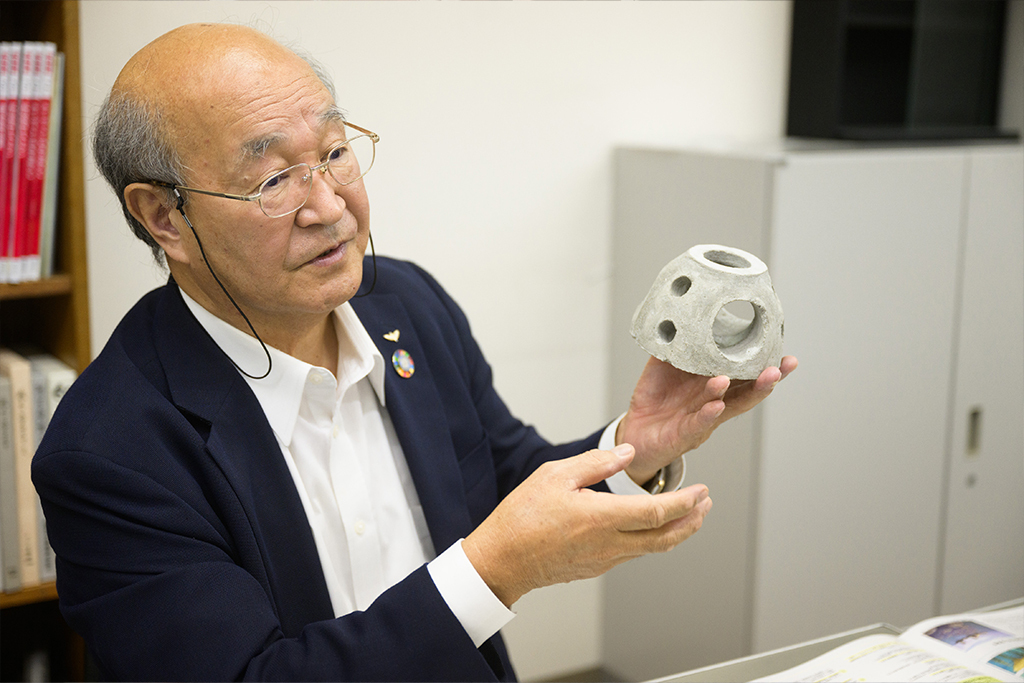
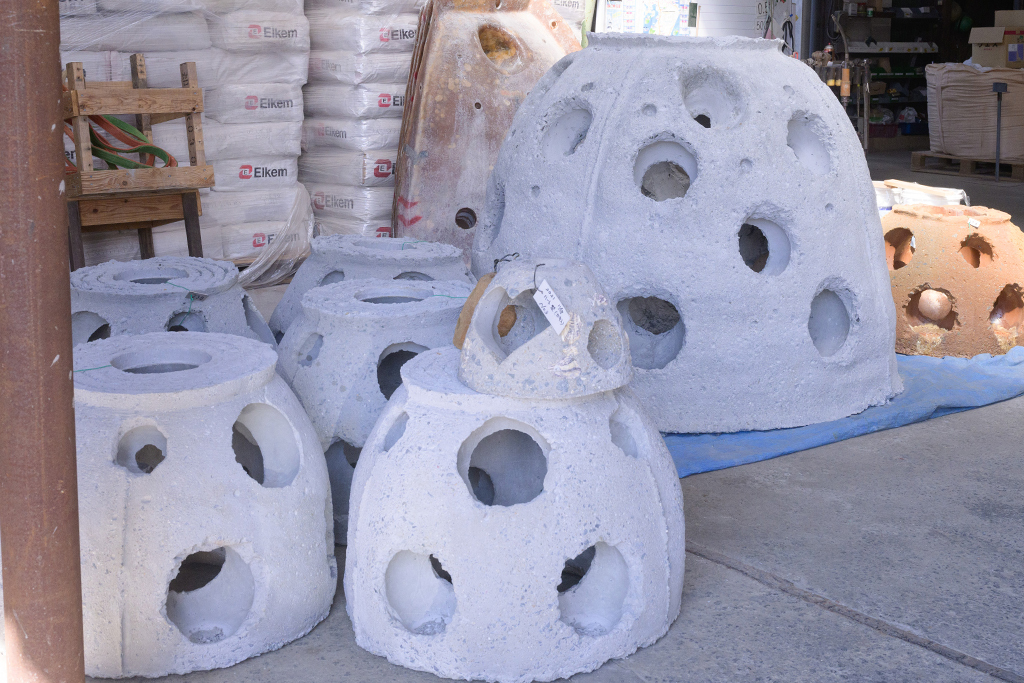
Realizing "seaweed pastures" for broader area restoration
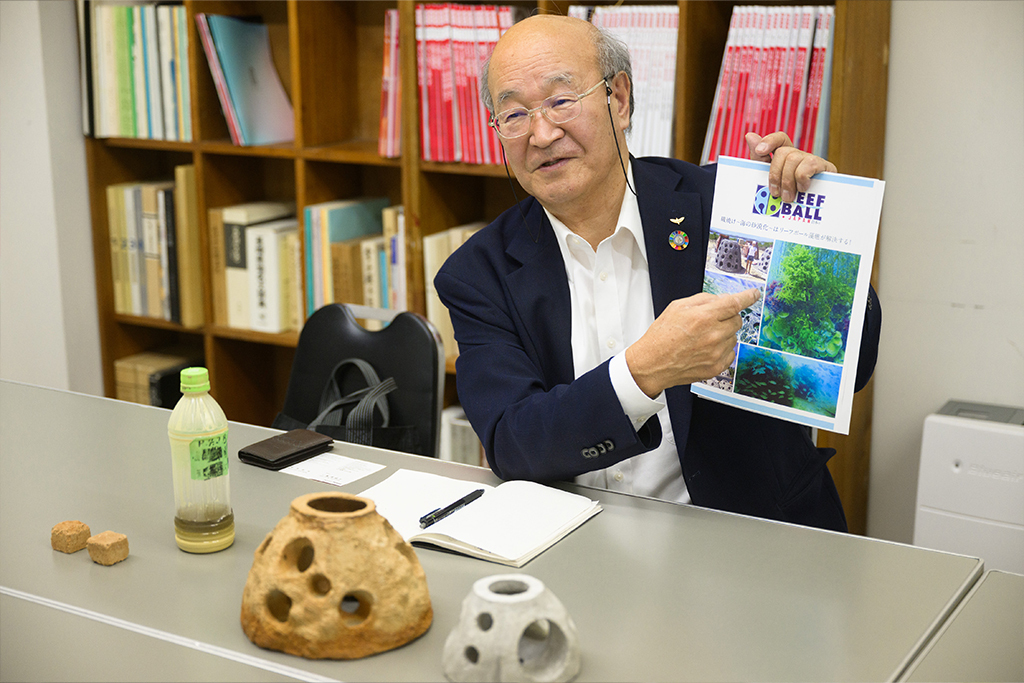
"We want to restore seaweed beds across various regions" – Asahi Tech's diverse challenges

After this interview, we visited Asahi Tech's headquarters factory to see the production of Leaf Balls and the experiments conducted there. Leaf Balls come in various sizes to ensure the optimal one can be installed based on ocean conditions. Using molds also allows for the creation of original Leaf Balls. "We run programs like workshops for children where everyone makes their own unique Leaf Ball," Mr. Ikeda shared. "Making it yourself fosters a deeper attachment and seems to increase interest in the ocean."
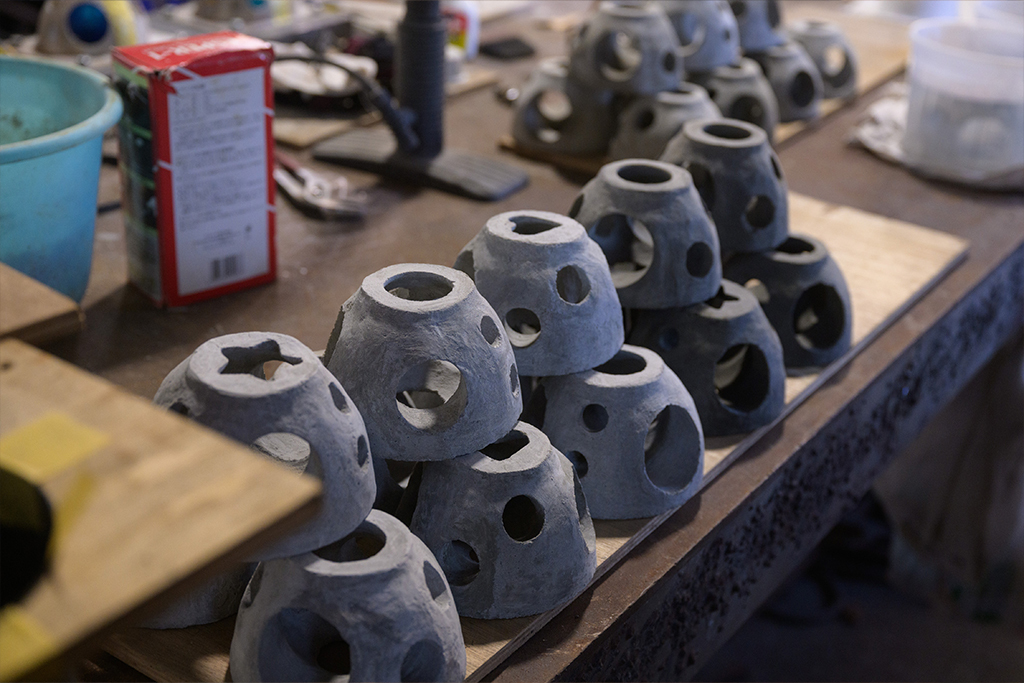
Furthermore, Mr. Ikeda was developing products beyond Leaf Balls. "The fulvic acid iron mixed into Leaf Balls is also mixed into these small blocks. Simply scattering these blocks in the ocean creates a state where nutrients for algae gradually dissolve into the sea. It's like feeding fish – you can easily spread nutrients into the ocean. In areas with solid rocky foundations, you can regenerate seaweed beds using just these blocks, without needing Leaf Balls."
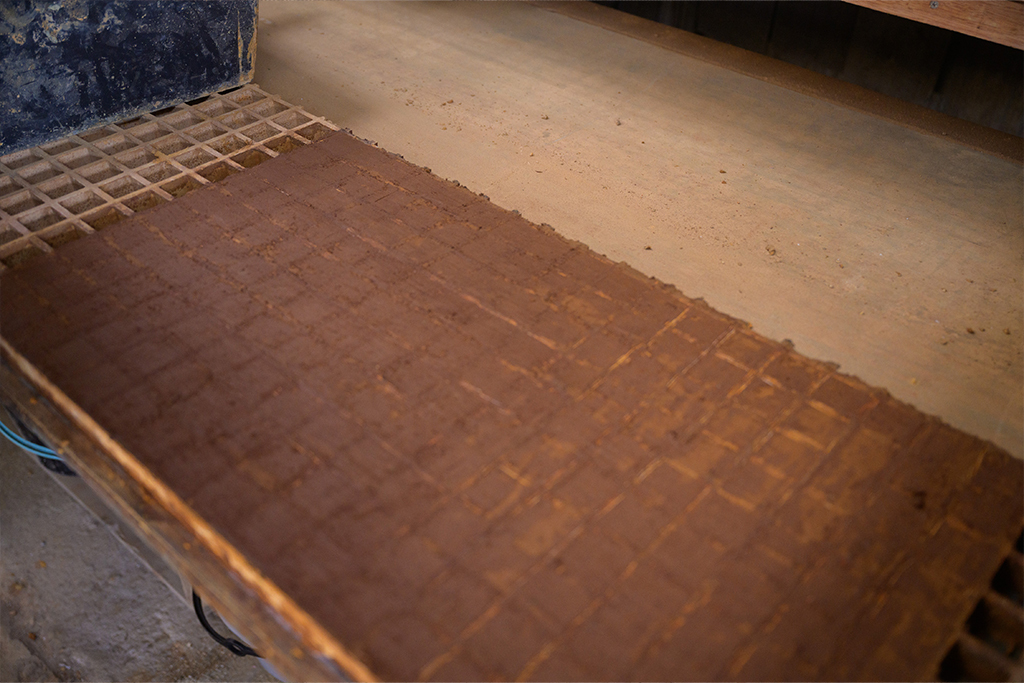
Behind the factory, many Leaf Balls await shipment. "Things don't always go as planned, but still, more and more people are gradually becoming interested in Leaf Balls. We're now conducting experiments not only in Nagasaki and the Kyushu region but also in Hokkaido. The bottom line is, if you install these, the seaweed beds will definitely regenerate. I really want many more people to join us," Mr. Ikeda passionately shared.

Mr. Ikeda, who fuses Japanese and American technologies to evolve Leaf Ball. He will continue his challenge to solve the major social issue of global warming.
Next time, we bring you a conversation between Hisanori Tayama, representative of the general incorporated association "Marine Habitat Iki," which is installing Leaf Balls in Iki City, Nagasaki Prefecture, and Takashi Fuji of Dentsu Inc.
*This refers to an international application under the Patent Cooperation Treaty (PCT), a system where filing a single application grants patent rights in all 157 PCT member countries for a specified period.
The information published at this time is as follows.
Was this article helpful?
Newsletter registration is here
We select and publish important news every day
For inquiries about this article
Author

Osamu Ikeda
Asahi Tech Co., Ltd.
President and CEO
Born December 11, 1949, in Nagasaki City, Nagasaki Prefecture. Graduated from Ritsumeikan University's Faculty of Industrial Sociology and Business Administration in 1972 (Bachelor of Business Administration) and joined Kobo Sho Co., Ltd. (Tokyo Headquarters). Relocated to New York in 1975 as Branch Manager for Nikko America Co., Ltd., and became Representative Director of Environmental Technology LLC in 1985. After returning to Japan in 2013, he became Representative Director of Asahi Tech Co., Ltd., a position he holds to this day. Service at UN Headquarters* 1980: Appointed Chairman of UN World Peace Bell Association USA Inc. (U.S. Public Interest Corporation) 1980–2013: Hosted the UN Headquarters Annual General Assembly Opening Ceremony.

Koji Fuji
Dentsu Inc.
Marketing Division 7, Solution Production Division 1
Chief Innovation Director
As a specialist in the environment and energy sector, I have been part of Dentsu Inc.'s cross-organizational unit DEMS for over 10 years, responsible for business development with domestic and international energy companies and startups. Since 2019, I have led the decarbonization and carbon neutrality domain, establishing "dentsu carbon neutral solutions" to coordinate and deliver group-wide carbon neutrality solutions and initiatives. Collaborated with internal and external members to develop behavioral change knowledge for decarbonized lifestyles using behavioral economics (nudge techniques) with the Ministry of the Environment, and to advance the Blue Carbon Project addressing coastal desertification—a critical issue for Japan as a maritime nation. Currently working daily toward the goal of positioning the 2025 Osaka-Kansai Expo as the "Ocean Expo," showcasing Japan's unique initiatives to the world.

